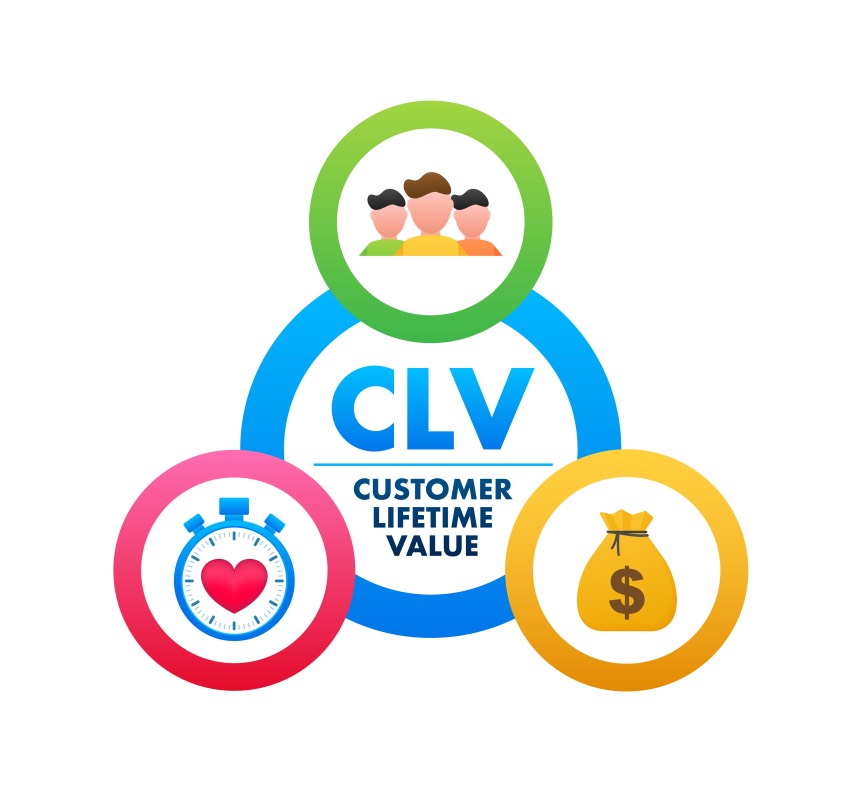Sales enablement is a term thrown around a lot in the business world. But what does it mean? And how can you measure it to ensure that your sales team is performing at their best? In this blog post, we’ll discuss sales enablement and some key metrics to track to ensure you’re getting the most out of your investment.
Stay tuned, business owners – measuring sales enablement is about to get much easier!
What is Sales Enablement?
Sales enablement is the process of equipping sales teams with the resources and knowledge they need to be successful. This can include training on products or services, providing access to relevant marketing materials, and giving them the tools they need to track and manage customer relationships. By definition, sales enablement is a broad term that can encompass a lot of different activities. But at its core, it’s all about ensuring your sales team has what they need to close deals and drive revenue. The sales enablement efforts of a company will vary depending on its size, industry, and sales strategy. A sales team at a small startup might need different enablement than a team at a large enterprise company. When a sales team is successfully enabled, it should be able to hit its quotas and reach its sales goals.
There are a few key things to keep in mind when thinking about sales enablement:
- Sales enablement is not the same thing as sales operations or sales training. While sales training can be a part of enablement, it’s not the only thing. Sales enablement also includes providing resources and tools and giving sales teams the knowledge they need to succeed.
- Sales enablement is not a one-time event. It’s an ongoing process that should be continually adapted and updated as the needs of the sales team change.
- Sales enablement is not just the responsibility of the sales manager. Everyone in the company, from the CEO to the individual sales reps, has a role to play in it.
Why is Sales Enablement Important?
There are many moving parts in a sales organization, and sales enablement helps keep everything running smoothly. When done right, it can help increase close rates, shorten sales cycles, and boost revenue. In other words, it’s vital to the success of any sales team.
Sales enablement is important because it:
Helps sales reps be more successful
The whole point of sales enablement is to help sales reps be more successful. Salespeople need to anticipate and handle many things so it’s key to help them do a more effective job. By providing them with the resources they need, you can give them a leg up in their selling efforts. The sales reps who are the most successful are usually those who have access to the best resources. If you can provide your sales reps with those resources, you’re giving them a big advantage. You can start by providing them with high-quality content, like ebooks, white papers, and infographics.
Want to improve your company’s profitability by measuring sales enablement correctly?
Contact Growth Hackers
Improves communication between marketing and sales team
Another important reason to use sales enablement is that it can improve communication between marketing and sales. All too often, there’s a disconnect between the two teams. Marketing team creates content that sales team don’t use or create their own content without marketing. This can lead to a lot of wasted effort and duplicate work. With sales enablement, there’s a system in place to ensure everyone is on the same page and working together. The sales enablement success metrics should reflect this by tracking the number of times sales uses marketing-created content or the amount of time spent creating duplicate content.
If marketing and sales work together effectively, they can help align their goals. Too often, these two teams have different goals that don’t align with the company’s overall strategy. This can lead to wasted effort and frustration on both sides. With sales enablement, everyone is working towards the same goal: generating revenue. The sales enablement success metrics should reflect this by tracking the number of sales-qualified leads and the close rate. If your sales cycle is longer, you may also want to track the number of opportunities created or the number of deals won.
Increases close rates
When you measure the right things, sales enablement can greatly impact your close rate. By tracking metrics like the number of leads generated, the number of sales-qualified leads, and the close rate, you can see how effective your sales enablement efforts are. If you do not see an increase in these numbers, it’s time to reevaluate your strategy. If a sales enablement program is working, you should see an increase in close rates. No matter how you define success, sales enablement should be able to help you achieve it. To measure sales enablement correctly, you need to track the right metrics. Always keep an eye on your close rate and ensure you’re generating more sales-qualified leads. Don’t be afraid to adjust your strategy if you think something’s off. The goal is to increase close rates, and sales enablement can help you get there.
Enables data-driven decisions
Sales enablement is important because it enables data-driven decisions. Too often, companies make decisions based on hunches or gut feelings. With sales enablement, you can track the right metrics to see what’s working and what’s not. This data can help you decide where to allocate resources, what content to create, and how to structure your sales process. Even if you don’t have a dedicated sales enablement team, tracking these metrics can help you improve your overall sales process.
Helps you scale your business
As your business grows, sales enablement can help you scale. By tracking the right sales enablement KPIs, you can see where you need to add resources and where you can cut back. This data can help you make informed decisions about how to structure your sales team and what roles need to be filled. If you’re not using sales enablement, it can be difficult to keep track of these things. As your business grows, sales enablement can help you scale efficiently and effectively. When the sales process works well, it can be a huge competitive advantage. As the sales cycle length increases, the importance of sales enablement grows. If you’re not using sales enablement, you’re at a disadvantage.
Improves customer satisfaction
Finally, sales enablement can result in improved customer satisfaction. By definition, sales enablement is about making it easier for salespeople to do their jobs and sell more effectively. When salespeople are better equipped to sell, they can provide a better customer experience, improving satisfaction scores. Suppose a customer feels like they’re talking to a salesperson who is truly knowledgeable about the product and the industry. In that case, they’re likely to have a better experience and be more satisfied with the interaction overall.
What are Some Key Metrics to Track for Sales Enablement?
There are several key metrics that you can track to measure sales enablement success. Here are some of the most important ones:
Lead generation
The first and most important metric to track is the number of leads your sales team generates. This will give you a good indication of whether or not your sales enablement efforts are paying off. Different sales enablement strategies will affect lead generation differently, so it’s important to track this metric closely. You may see a spike in leads after implementing a new sales enablement strategy, or you may not see any change. Either way, tracking how your sales team’s lead generation is affected by your sales enablement efforts is important.
Sales conversion rate
Another important metric to track is the sales conversion rate. This is the percentage of leads your sales team can convert into paying customers. This metric will give you a good indication of how effective your sales enablement strategies are in helping your sales team close deals. If you see a significant increase in the sales conversion rate after implementing a new sales enablement strategy, you know you’re on the right track. If your sales enablement strategy does not positively impact the sales conversion rate, then it’s time to rethink your strategy. Always keep an eye on the sales conversion rate so you can make necessary adjustments to it. You may want to add more content or training to help your sales team close more deals.
Revenue per customer
Another metric you should track is the revenue per customer or also called customer lifetime value (CLV or CLTV). This metric will give you an idea of how much revenue your company generates from each customer. If you see a decline in this metric, it may indicate that your sales team is not selling to the right customers or that your product is not meeting your customers’ needs. Many businesses make the mistake of only tracking the number of sales, but it’s also important to track the revenue. Some indications that your revenue per customer is declining could be that your prices are too high, your product is not meeting customer needs, or your sales team is not selling to the right customers. As the average selling price goes up, it becomes more important to track this metric closely.
Now is the time to start measuring sales enablement correctly!
Sales productivity
Sale productivity is another metric that is essential to track for any sales enablement program. By tracking the number of calls, emails, and meetings a salesperson has each day, week, or month, and you can get an idea of how effective your sales enablement program is in helping them sell. Like if your sales rep performance drops, you’ll know that something isn’t working and can make changes accordingly. There are many time management hacks for sales representatives and teams out there. Some ways to help you measure sales productivity are using a CRM system or tracking software like Salesforce, HubSpot Sales, or Pipedrive.
Win rate
The win rate is the number of deals a salesperson closes divided by the total number of deals they’ve worked on. This metric is important to track because it shows how effective your sales team is at closing deals. If your win rate is low, it could indicate that your sales team needs more training or coaching on closing deals. Many businesses we work with like to track their win rate by product, salesperson, and territory. As the sales rep performance changes, so will the win rate. If a salesperson works on many deals but does not close many of them, their win rate will be low. If a salesperson is closing a high percentage of the deals, they work on, their win rate will be high.
Sales cycle length
The sales cycle length is the amount of time it takes for a salesperson to close a deal. This metric is important to track because it can give you insight into how efficient your sales process is. If your sales cycle is too long, it could be a sign that your sales team is not efficient. Usually, the shorter the sales cycle, the better. Even if your sales team is efficient, a long sales cycle can signal that your product is too complex or that your pricing is too high. Always track this metric so you can identify any problems with your sales process. While there are no hard and fast rules for what a “normal” sales cycle length is, most companies aim for a cycle that is between one and three months. Suppose your sales cycle is four months. In that case, you may want to consider ways to shorten it, such as providing more training to your sales team or streamlining your product.
Final Words on Measuring Sales Enablement
As we all know, different product enablement and sales enablement activities will have different objectives, and it’s tough to draw a line between what is or isn’t working. The key is to track the right metrics that will give you insight into whether or not your sales enablement program is positively impacting your business. Avoid tracking too many metrics as this can be overwhelming and make it difficult to focus on what’s important. Stick to a few sales enablement metrics that will give you the most insights into whether not your sales enablement program is working. Whether you’re just starting with sales enablement or doing it for a while, these metrics will help you measure your success. If your marketing and sales teams are working together closely, you should see a positive impact on your business.
Growth Hackers is one of the top customer acquisition agencies helping businesses from all over the world grow. There is no fluff with Growth Hackers. We help entrepreneurs and business owners measure sales enablement properly, increase their productivity, generate qualified leads, optimize their conversion rate, gather and analyze data analytics, acquire and retain users and increase sales. We go further than brand awareness and exposure. We make sure that the strategies we implement move the needle so your business grow, strive and succeed. If you too want your business to reach new heights, contact Growth Hackers today so we can discuss about your brand and create a custom growth plan for you. You’re just one click away to skyrocket your business.






